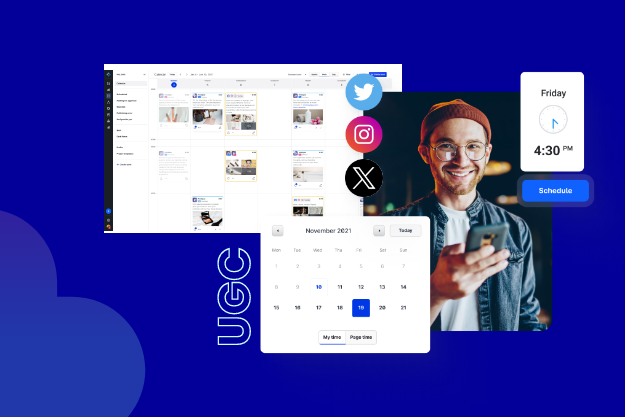Sometimes, your customers are your best marketing asset. What sounds “sales-y” coming from your brand can sound more authentic when it comes from real-life customers sharing feedback without any prompt or compensation. In fact, consumers find UGC to be 9.8x more powerful than influencer content, according to HubSpot.
That’s why user-generated content (UGC) is no longer just a nice-to-have — it’s a must-have for any brand to have as part of their marketing mix in order to drive brand awareness and social media engagement, and for commerce teams to help boost the bottom line by incorporating it at key moments in the buying journey.
However, like any other form of marketing, UGC campaigns have to be executed strategically, and brands take certain steps to help ensure these campaigns’ success.
As part of a recent Emplifi guide created in partnership with HubSpot, “How to Unlock the Power of UGC: The Ultimate Guide,” we looked at some of the do’s and don’ts of collecting, curating, permissioning, and publishing user-generated content to help ensure you’re getting the most value from your UGC campaigns. Here’s a preview below, but be sure to download our full guide for the complete who, what, why, and how of successful UGC.
Do: Plan before sharing UGC
Does it fit your overall brand message, align with a specific campaign, or blend well with your brand aesthetic and style? From social media to emails and on-site inspiration galleries, treat UGC like you would any other marketing content.
Don’t: Take shortcuts
Before posting on any official company channel, don’t forget to verify the source. Reposting an image can seem harmless but, in the age of social media where catfishing and trolling are rampant, it doesn’t hurt to play it safe. UGC platforms can help you ensure each content piece is original and authorized — and used at scale.
Do: Ask permission
Even if you’re just resharing a customer photo on social media, crediting the original poster is not enough. It’s always important to secure proper consent, even if you were tagged by a public account.
Because the rules on copyright on social media can get blurry and confusing, it’s always better to be cautious. Most UGC platforms allow brands to streamline the permission-request process with the click of a button.
Don’t: Silo content to one channel
Most UGC comes from social media, but that doesn’t mean it has to stay there. UGC is versatile — be sure to also pop it into your other marketing channels such as email, ads, in-store displays, and, for eCommerce brands, everywhere on your site.
Do: Engage and encourage interaction
Use features like “Share Yours” and Question stickers on Instagram Stories to your advantage to help encourage your audience to share engaging UGC. Share content that stimulates discussion about your brand or product, and engage with your community’s original posts. This will not only get you free and engaging content (don’t forget to ask permission before using it, though!) but also a chance to collect some honest insights from your users.
Don’t: Limit yourself to large-scale influencers
Macro-influencers may receive more likes than your average customer, but don’t overlook everyday fans. Featuring stories from people your customers can relate to can also encourage more engagement and build a stronger connection with your customers. For example, micro-influencers may already be fans of your brand and tend to see much higher levels of sustained engagement because of their niche, targeted, and loyal followings.
Do: Define and measure KPIs
Map specific content creators and social posts to revenue to help your team decide which channels and post types are most valuable across the board. Defining and monitoring metrics like this can also help your team convey the value of UGC to company leadership.
Do: Get more insights and best practices to power your UGC strategy
UGC can not only help your brand scale up content creation for your digital and social channels, but also help you boost your connection with your audiences by putting them front and center. Regardless of whether your team is considering getting going with UGC or just looking to get a better foothold on your current UGC strategy, download our guide that we created in partnership with HubSpot, “How to Unlock the Power of UGC: The Ultimate Guide,” to gain all the insights you need.

Editor’s Note: This is an update to an article from March 31, 2021 originally published on pixlee.com





















